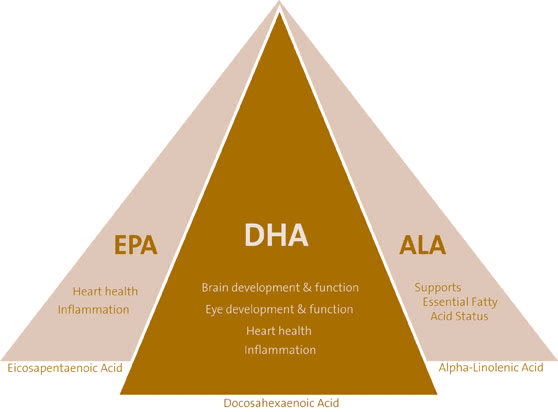The Omega-3 Facts
There are Good Fats and Bad Fats
It is often said that Americans consume too much fat, but in the U.S. and other parts of the world, many people don't eat enough good fat. While consuming diets high in saturated and trans fats have been shown to raise LDL or "bad" cholesterol levels and increase the risk of coronary heart disease, foods high in polyunsaturated fats, specifically omega-3 fatty acids, are important for good health. When attempting to avoid the "bad fats" it is important to not cut out the "good" fats as well. So, how can you tell which fats are good and which fats are bad?
The Good Fats
- Polyunsaturated fatty acids are found primarily in vegetable oils such as safflower, sunflower, corn, flaxseed and canola oils. Omega-3's DHA (docosahexaenoic acid) and EPA (eicosapentaenoic acid), two long-chain polyunsaturated fatty acids, are found primarily in fatty fish, while ALA (alpha-linolenic acid) comes from primarily plant-based sources.
The Bad Fats
- Saturated fatty acids are found mainly in animal sources such as meat and poultry, whole or reduced-fat milk and butter.
- Trans fatty acids are found in vegetable shortening, some margarines, snack foods, cookies and other foods that are made with hydrogenated or partially hydrogenated oils.
Both the American Heart Association and the USDA Dietary Guidelines have recognized the association between the consumption of polyunsaturated fats, specifically omega-3 fatty acids, for good heart health.
Understanding the Role that Each Omega-3 Plays
Today, more and more food products claim to be a good source of omega-3's, but not all omega-3's are created equal. There are three major omega-3 fatty acids each with distinct health benefits:
- Docosahexaenoic Acid (DHA)
- Eicosapentaenoic Acid (EPA)
- Alpha-Linolenic Acid (ALA)
DHA, a long chain omega-3 fatty acid, is the most abundant omega-3 in the brain and retina. It is also an important structural component of heart tissue and naturally found in breastmilk.
EPA, a long chain omega-3 fatty acid, is important for human health. However, unlike DHA, EPA is not stored in significant levels in the brain and retina and is not considered a significant structural part of the body.
ALA, an essential fatty acid (EFA), is a shorter-chain omega-3 fatty acid that serves as a source of energy. It is also a precursor for EPA and DHA and is needed for skin health.



